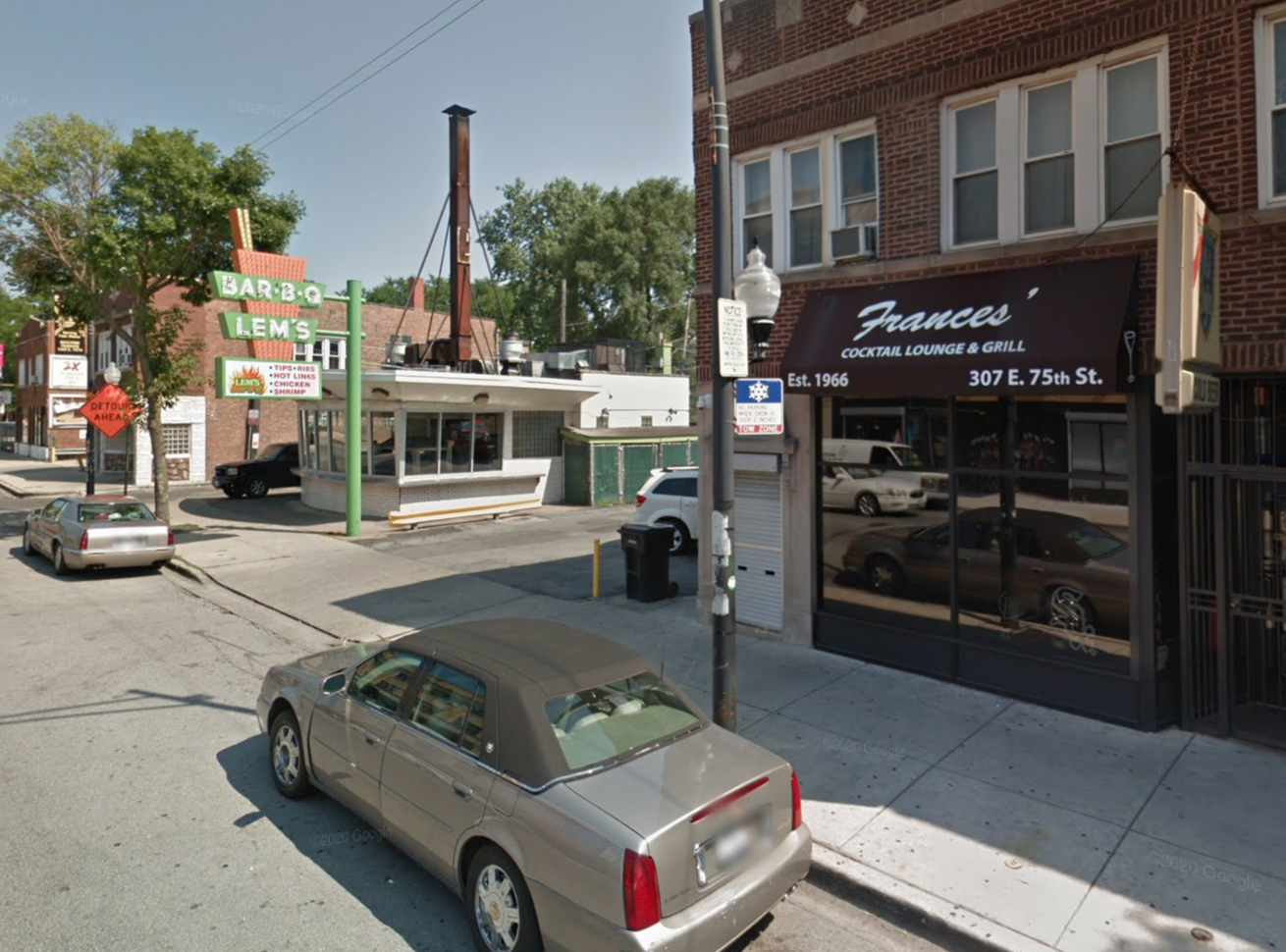Update 6/25/20, 11:30 AM: Block Club talked to community leaders and restaurant owners on 26th Street about the decision to cancel the Cafe Street. “We had heard anecdotally that on days 26th Street is closed to traffic [for festivals, 26th Street merchants] lose upwards of 75-80 percent of their business,” said 22nd Ward alderman Michael Rodriguez. However, during festivals, food stalls and other vendors compete with brick-and-mortar restaurants and shops, while Cafe Streets attract people to business strips who spend money at local eateries and other retail establishments.
Block Club also reported that, despite not being mentioned in yesterday's announcement, the plan for Randolph appears to be moving forward, with on-street dining possibly launching this weekend.
On May 29 Mayor Lori Lightfoot announced that the following streets would become fully pedestrianized Cafe Streets to make room for socially distanced outdoor dining and help out the struggling restaurant industry during COVID-19.
- Chatham: 75th Street from Calumet Avenue to Indiana Avenue
- Lakeview: Broadway from Belmont Avenue to Diversey Parkway
- Little Village: 26th Street from Central Park to Harding Avenue
- Rush and Division: Rush Street from Oak Street to Cedar Street
- Near West Side: Taylor Street from Loomis Street to Ashland Avenue
- West Loop: Randolph Street from Expressway no further than Elizabeth Street
Two weeks later on the weekend of Friday, June 12, the Broadway and Rush Cafe Streets finally opened, and appeared to be hugely successful in terms of attracting customers, to the extent that I wouldn't be surprised if they become a permanent summer feature in the future. (I'll leave it to the Chicago Department of Public Health to decide whether these interventions are working from a pandemic safety standpoint.) ABC Chicago also recently reported that a Cafe Street has launched in the Heart of Italy district on Oakley Avenue at 24th Street on the Lower West Side. But no other Cafe Streets had opened before today.
This afternoon Lightfoot announced announced the next five outdoor dining zones (one of them isn't actually a street) starting this weekend or earlier:
- Andersonville: Balmoral Street, pedestrianized on both sides of Clark Street, started today
- Chinatown: Chinatown Square, the car-free shopping arcade north of Archer Avenue between Wentworth to Princeton, will have outdoor seating
- Near West Side: As previously announced, Taylor Street will be pedestrianized from Loomis Street to Ashland Avenue
- Edison Park: Oliphant Avenue will be pedestrianized from Northwest Highway to the first alley to the north
- Chatham: Sidewalk dining on 75th Street from Calumet Avenue to Indiana Avenue
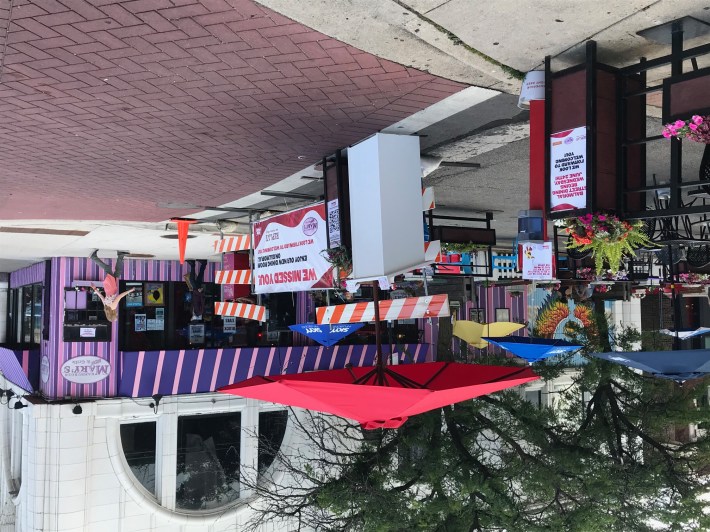
Note that Randolph in the West Loop and 26th Street in Little Village are no longer appear to be on the table. [Update: Despite not being mentioned in the latest announcement, Randolph does seem to be moving forward.] In addition, the plan for 75th Street in Chatham has been watered down from a pedestrianized street with tons of room for large outdoor seating, to mere sidewalk tables.
The mayor's office, the Chicago Department of Business Affairs and Consumer Protection, and the Chicago Department of Transportation didn't respond today to questions about why the plans for Randolph and 75th Street were apparently canceled or diluted. However, in an interview with Streetsblog last week, CDOT chief Gia Biagi provided some clues on why the plan for 26th Street was nixed.
"Initially full closure [on 26th] was thought to be a helpful thing," Biagi said. "But we know there's a lot of curbside pickup, and that restaurants there really need to enable the curbside pickup to happen, so we're continuing to work in Little Village, Pilsen, other places to make sure we can find the mix. What we found is that sometimes the minor streets that are nearby might be a better fit. Sometimes the main commercial drags are a little more difficult. So each case is different."
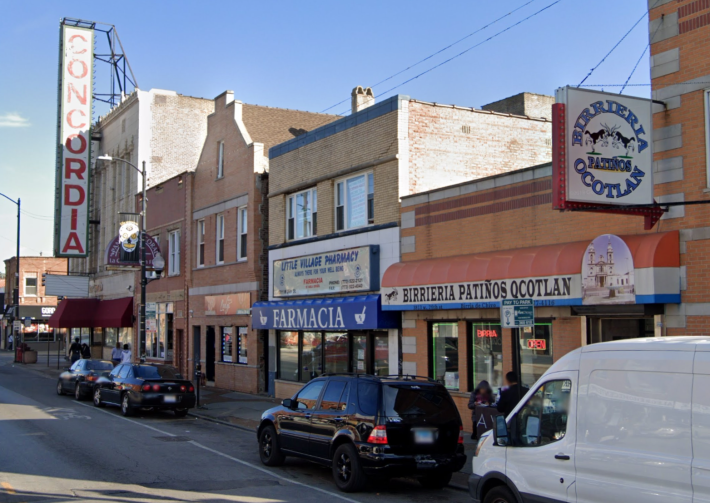
I asked why curbside pickup would be any more important on 26th Street than on on Broadway, which also has tons of restaurant pickups, currently being accommodated by side streets. "The difference is listening to the community and those restaurateurs and what they're asking for," Biagi responded.
I noted that the physical layout and uses of 26th and Broadway aren't radically different, so the issue might be more of a perception that a Cafe Street would cause problems for restaurant owners on 26th, rather than a reality. Biagi responded, "There's also a CTA bus route on 26th Street, so that makes it challenging." But Broadway has a bus route too, which was relocated to accommodate the pedestrianization.
Biagi's right that listening to feedback from local residents is crucial when planning this kind of project. For example there are real concerns about public safety on the South and West that lead many residents to drive to local business districts, and merchants and community leaders may worry that pedestrianized streets will attract unwanted congregation. These issues typically aren't factors in privileged North Side neighborhoods.
On the other hand, a 2013 WBEZ analysis found that almost all of Chicago's sidewalk cafes were on the North Side, largely in majority-white neighborhoods. Issues of structural racism have made it more difficult for entrepreneurs of color on the South and West sides to open restaurants. The WBEZ piece also noted that Chicago's Pedestrian Street designations, which encourage walkable, sidewalk cafe-friendly business strips by banning car-centric land uses like strip malls and big-box stores, are rare in low-income neighborhoods because community leaders want to avoid discouraging any kind of investment, including auto-oriented establishments. It doesn't appear that much has changed cafe-wise in the last seven years.
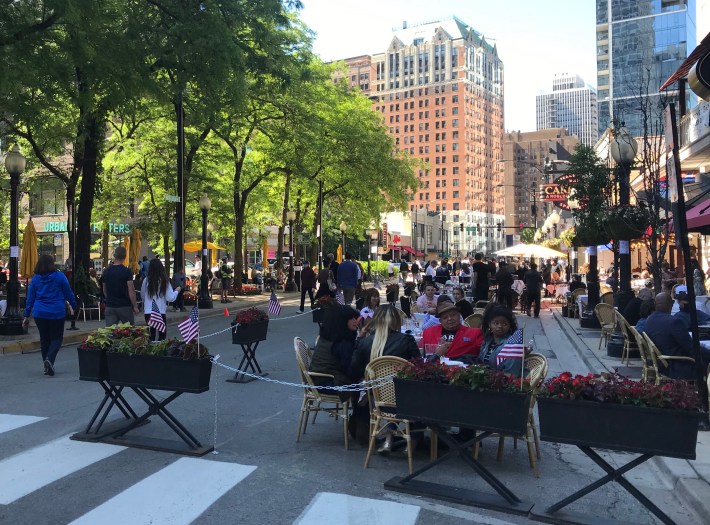
So it's unfortunate that this disparity is continuing with Cafe Streets, since no restaurant strips made up primarily of African-American- or Latino-owned establishments are currently slated to be pedestrianized. That means that restaurateurs of color could miss out on the profits associated with the big, busy, outdoor seating areas on Broadway and Rush. However, it's still possible that Black and Brown restaurateurs in other districts will apply to have their corridors pedestrianized.
Lightfoot also announced today that the city has also approved permits for over 30 businesses to use their parking lots for outdoor service. The lot permits are immediately in effect and will allow the establishments to offer table service in the lot for up to 180 days. Hopefully these businesses will understand that this land is way more valuable as space for customers than as storage for metal boxes and will seek to permanently convert the space to seating.
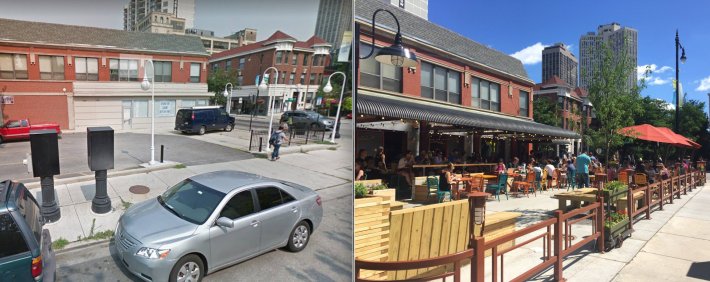
Earlier this month the City Council passed an ordinance temporarily making the permit process for regular sidewalk seating faster and cheaper, and allowing for larger cafes that overlap adjacent properties (an idea I suggested to the mayor's office and BACP on Twitter back in April). To date, BACP has approved over 1,000 sidewalk café permits and continues to process applications.
